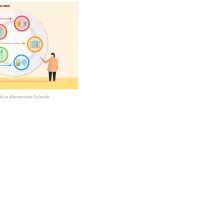"The SEND Phonics Puzzle: Every Child Deserves a Piece!" - Gabriela Neal-Gonzalez (Literacy Specialist)
When I sat down to write this blog post, one thought immediately came to mind: ‘How can we be better for our SEND learners?’ The teaching of phonics is fundamental for any child to learn to read, when I say any, I really mean ALL. For years there has been the misconception that ‘If this child has SEND they cannot learn to read in the same way as their peers!’ The truth of the matter is all children, no matter their starting point or their need, will learn in the same way as the rest of their peers – phonics is the way to teach reading. The phrase ‘teach reading’ is absolutely key here – we are not born with the inbuilt knowledge of reading – we have to be taught to read. So, if we take this into consideration – we all begin at the same starting point no one is born with reading skills (although how easy would it be if we were?!) we gain them over time through considerate and consistent high-quality teaching. Many accredited SSP’s now have their own support packages designed to ensure that pupils with SEND are not playing ‘catch up’ but they are ‘keeping up’.
I really love this quote from Robert John Meehan, “It shouldn’t matter how slowly some children learn as long as we are encouraging them not to stop”, these words are so powerful. Each and every child is unique in their own way and their academic successes will differ vastly from one child to another. Imagine if we all were exactly the same – how boring life would be! While we strive for SEND children to learn to read alongside their peers, we also need to remember to consider one thing they truly need from us…. TIME. In our fast-paced world, time can feel like a luxury, but this is what our wonderful children with SEND need – time to take in their learning and to process what they have been taught - repetition is key! Did you know that a neurodivergent child may need to see or hear a sound 40-50 times before they can truly grasp it? That’s ten times more than their peers may require.
How can we support pupils with SEND in learning to read? Below, I have compiled some effective strategies based on research and experiences:
Mirroring
When teaching children to read we need to remind ourselves that the focus isn’t about testing what they already know but on modelling and allowing them to mirror. We learn many things through mirroring others- behaviour, expressions, even vocabulary- and learning to read is no different. You can quite literally even use a mirror in front of you and a child when teaching phonics. Get the children to watch the way your mouth moves as you say the sounds, you want them to see good examples of the pure sounds. Using a physical mirror means they can look at the way your mouth moves and their own too.
Repetition
Practise, practise, practise. Provide children with constant opportunities to listen and repeat back – think my turn, your turn. You can even add a further scaffold and repeat together- my turn, your turn, our turn. This model is simple but effective!
Flexibility
Children who have a SEND need will need more flexibility (just in the same way they need more time) and we need to consider this carefully – do they need an altered session length? Perhaps the key would be “chunking” the lesson up into smaller intervals to ensure that they are focused for those short bursts of time. They are still given the same learning opportunities as their peers but we can reach the goal through a different route!
‘See it, say it, touch it’
This approach is a really useful tool to use, children see a sound through recognising it though sight, say the sound out loud and practice it multiple times (think back to the mirroring strategy!) and then they trace over the sound using their finger. This could be extended into a multi-sensory approach. During non-directed phonics time children could access activities using different sensory approaches, all being linked to the sound that they have been learning.
If, like me, you enjoy reading up to date research and articles written by specialists then the Education Endowment Foundation (EEF) are a fantastic resource to find research-based approaches and a real in depth look into phonics teaching. The EEF discusses a “Five-a-Day” approach for SEND learners but addresses the fact that this kind of approach benefits ALL children.
Scaffolding
All learners, no matter their starting point or cognitive abilities, will thrive and learn though scaffolded approaches – we see this in phonics, and we may not even realise we are doing it! Through constant modelling we are scaffolding the children’s learning – think, ‘My turn, your turn’ – we want the children we teach to be successful learners and to recall that key information that is so desperately needed!
When digging deeper into phonics and SEND I came across this quote from Dr. Maryanne Wolf and it really resonated with me, “Some of our children need not 10 exposures, but a hundred exposures. That’s not drill and that’s certainly not kill. That is supporting children who need that time…”
Consider her words and remember that the biggest tools and resources that we can possibly give to our children with SEND is…OUR time.


